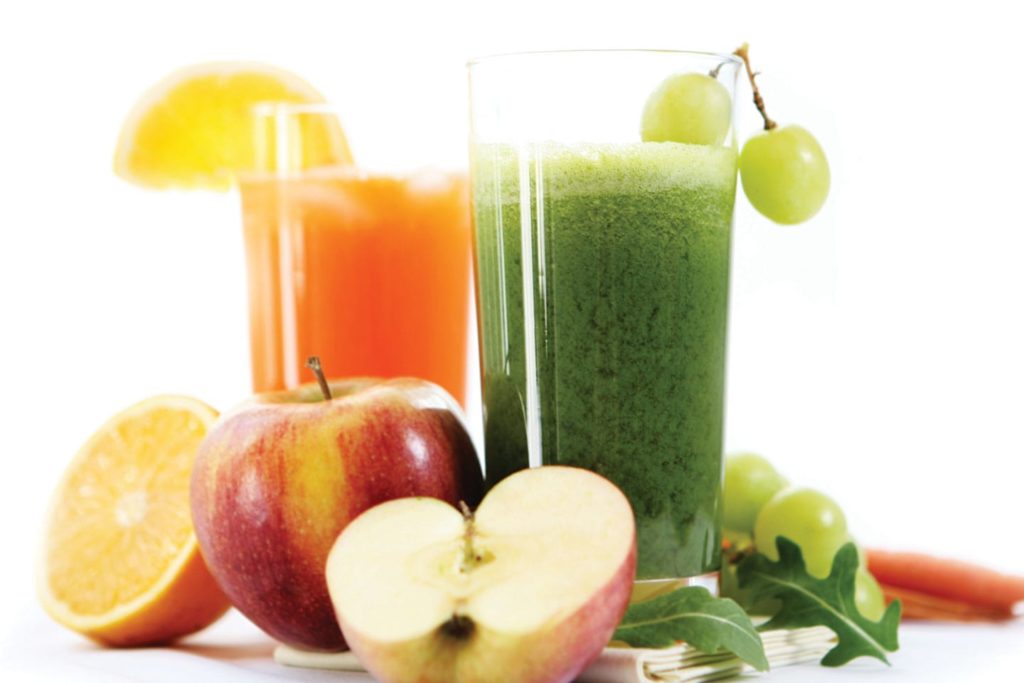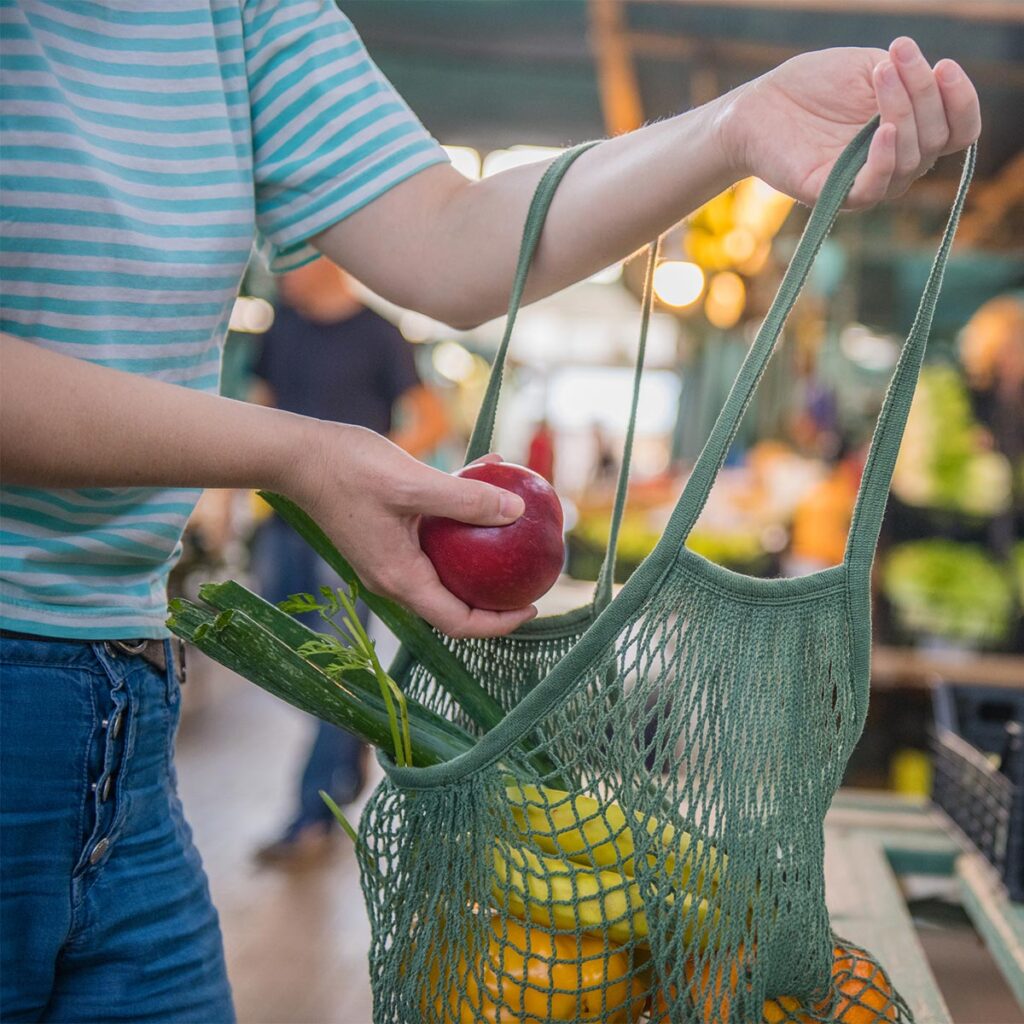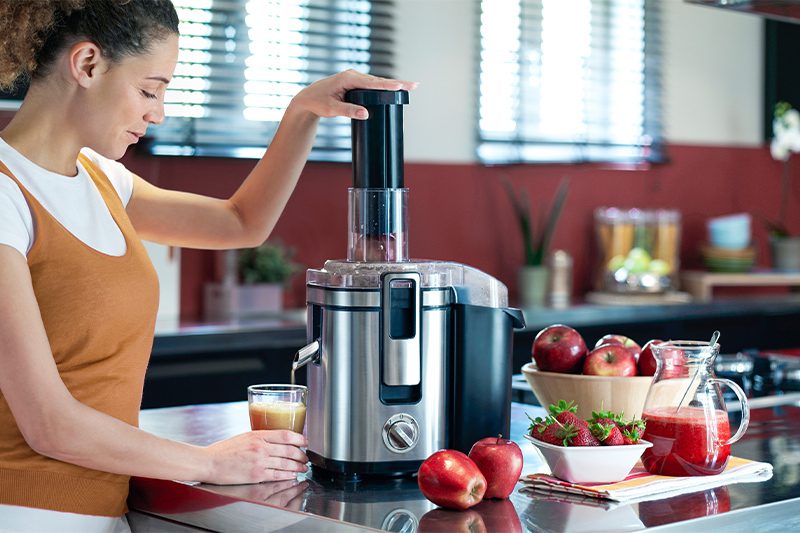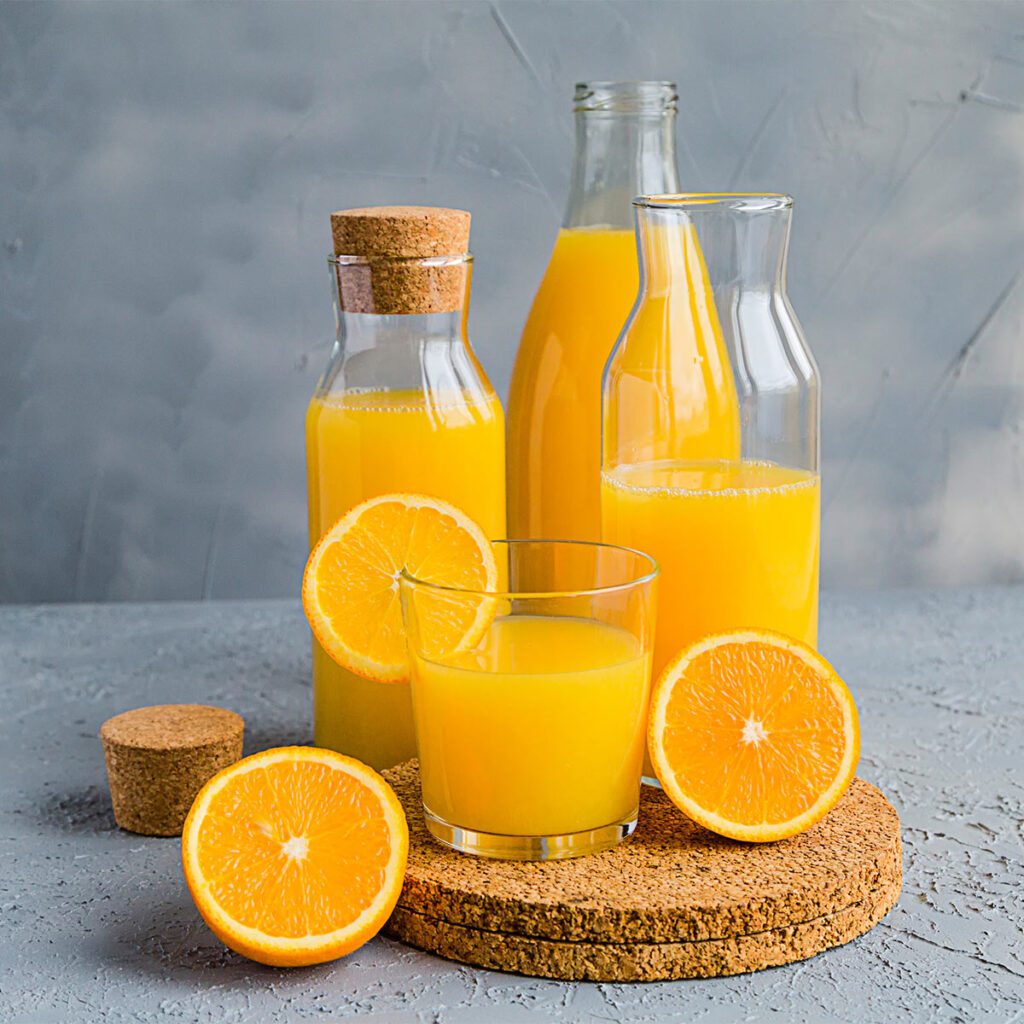For Good Health
Juicing, the process of extracting juices from fresh fruits and vegetables for a healthy snack or meal, has become an increasingly popular trend in the last decade. Recognizing that juice from fresh produce is a healthy, natural source of nutrients, many health-conscious eaters (or should we say, drinkers?) have invested in juicers to make their own concoctions at home. With the right juicer and mix of fruits and vegetables, homemade juices can be a great addition to a healthy lifestyle. However, before jumping in with two feet, it’s important to understand what juicing may or may not do for your health.
Separating Fact from Fiction For many people, juicing is a simple way to increase their consumption of fresh produce. The USDA says that most Americans need to eat 2 to 3 servings (cups) of vegetables every day and 1 ½ to 2 servings (cups) of fruit. For those who don’t like the taste of certain vegetables, juicing can be a great way to get them in the diet by masking their flavor with fruit. Others love juicing simply because it’s a delicious, healthy snack that helps to wean taste buds away from high-fat, high-sugar foods and toward healthier, nutritious foods.
Unfortunately, there are many extreme diets, books and infomercials in the market today that promote an irresponsible kind of juicing.


Juicing shouldn’t be done at the expense of eating real meals or by giving up foods the body needs. “Fresh juice is a great snack, but I think it’s unwise to use it as a meal replacement,” says Angela Hamilton, a registered dietician with Parkridge Health System. “When you juice you take out the protein that you may normally get in a meal. Although you do get vitamins and minerals from foods you might not normally eat, juice will also lack the fiber you would normally get.”
Some people aren’t good candidates for juicing because of the way it affects the body after digestion. If not done carefully, juicing can come with loads of sugar, even though it may simply be the natural sugars found in fruits. It’s important to follow responsible juicing guidelines: use common sense, continue to eat food, and don’t drink too much juice too fast. It’s a good idea to talk with a physician before incorporating juice into your diet on a regular basis.
Making Juice at Home
To determine if you even like fresh raw juice, visit a health food store, spa or grocery store where you can purchase and try some fruit and vegetable juices. If you find that you like fresh juice, you’ll be more likely to enjoy making your own juice at home. Use the following steps when beginning to make your own delicious and healthy juices.
Step 1: Choose a Juicer
The first step toward making your own juices at home is to choose the juicer that’s right for you. Multi-purpose power juicers are designed to juice just about everything. Most can juice a variety of fruits and vegetables, including their skins, seeds and stems. Some can even make sorbet, pâté and nut butters.
The three main types of power juicers include:
- Centrifugal juicers. These are the most common type of juicer you see in stores or on TV. These juicers work at high speeds and tend to be noisy. They grind the produce and then spin it, pushing the juice out through a strainer. Centrifugal juicers work well with soft and hard fruits and vegetables, but not quite as well with leafy greens like kale or spinach, or with wheatgrass.
- Masticating juicers. These juicers use a single gear to “chew” or break up plant cells, allowing for better extraction of fiber, enzymes, vitamins and minerals. They expel the pulp while they’re juicing, which allows for continuous use. Masticating juicers tend to be slower, quieter, less messy, and easier to clean than the centrifugal juicers. They also typically yield more juice.
- Triturating juicers. Also known as twin gear juicers, these machines crush and then press the juice. They are the most expensive kind of juicers, but are the best at extracting fibers, vitamins and minerals. They also have magnetic and bio-ceramic technology, which slows down the oxidation process of the juice. This is great if you intend to store the juice.
#CommissionsEarned
Step 2: Choose Juice Recipes and Go Produce Shopping
Your next step toward making your own juice is deciding on juice recipes and shopping for the appropriate produce. When hitting the grocery or health food store, many health professionals recommend choosing organic produce to avoid consuming concentrated amounts of pesticides. In general, you can get about 8 ounces of juice from a pound of raw produce, so plan ahead to avoid wasted juice. “You also don’t want to make too much juice in advance because it’s highly perishable,” Hamilton explains.
When choosing recipes, it’s important to note that juices that use more fruit, though they may taste more pleasant than juices that use more vegetables, tend to increase insulin levels.



Vegetables that are grown underground such as carrots, beets and yams also tend to be higher in sugars. As your body gets used to juicing, it’s a good idea to reduce the amount of fruits you use and focus mainly on vegetables that are lower in sugar.
A good option for beginners is to mix simple combinations of veggies with fruit to get the best-tasting juices. “It’s good to start with fruits and vegetables that you know you enjoy and can tolerate well,” Hamilton says. “Then work your way up to foods that are harder to digest.”
Many like to start with recipes that use gentle vegetables such as carrots, celery and cucumber. Once your body is comfortable with these basic vegetables, you may want to try recipes with vegetables like broccoli, cauliflower, zucchini and lettuce. To make it more palatable, include lemons or limes (a quarter to a half with the white rind on), cranberries (limit to 4 oz. per pint of juice), or fresh ginger.
As you progress, you may choose to introduce some dark green leafy vegetables such as kale, Swiss chard, wheatgrass, collard greens, mustard greens and dandelion greens. Be careful not to introduce dark green leafy vegetables too soon as they can be difficult for some to digest.
Step 3: Get Juicing!
You have your juicer, your recipe, your produce, now it’s time to start the process of juicing! Begin by washing your produce thoroughly. If you are not using organic produce, consider using an organic vegetable cleaner to wash off pesticides.
Then, cut or tear produce into pieces that will fit in the juicer. Remove all seeds and pits to avoid damaging your juicer. You can roll leafy greens into tight little balls and juice them along with harder produce to get the most juice out of the greens.



The juicer should be on as you feed the fruits and vegetables through the hopper with the plunger. Hard produce like apples or beets are processed on high, while soft ones like spinach or cabbage are processed on low. If you are making a large amount of juice from several pounds of produce, give the juicer a rest and clean out the pulp to prevent damage to your juicer.
Step 4: Enjoy and Store Remaining Juice
Vegetable juice is highly perishable, so it is best to drink juice immediately. However, juice can be stored for up to 24 hours. Consider the following for proper juice storage:
- Put your juice in a glass jar with an airtight lid and fill it to the very top. There should be a minimum amount of air in the jar as the oxygen in air will “oxidize” and damage the juice.
- Purchase a food vacuum pump with a sealer jar attachment. Pour the juice into a pint jar and put the lid on and use the pump to suck out the air in the jar. This will remove most of the oxygen that will damage the juice.
- Immediately store the juice in the fridge and drink within 24 hours of juicing.
If you so desire, you may also choose to use the leftover pulp—which is normally rich in fiber—for cooking muffins or other baked items.




